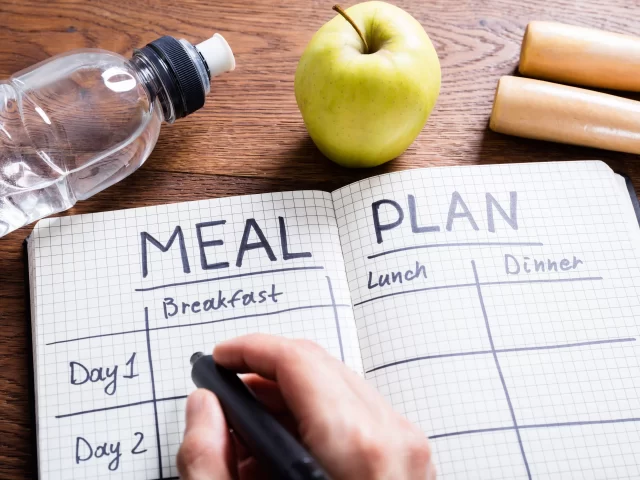How to Create a Diabetes Meal Plan

Meal planning can help you eat healthier, whether you plan meals a week or even a day at a time. By already knowing what you’re going to eat, and having the food needed to prep planned meals and snacks, you’re less likely to grab something unhealthy when you’re hungry and looking to fuel your body fast.
If you have diabetes, meal planning is an especially valuable tool to help you manage the disease. By planning meals and snacks, it makes it easier to keep your blood sugar levels steadier while ensuring you get the nutrition you need.
Here are some tips to keep in mind when creating a diabetes meal plan:
- Follow the advice of your medical team. Your doctor, nurse, diabetes educator or registered dietitian will provide you with information about how many carbohydrates you should eat at any one time or over the course of the day. You may also be given advice for planning meals around when and how often you take medication or insulin.
- Focus on whole foods instead of processed foods. Aside from the fact that whole foods are typically healthier than highly processed foods, you’ll also know exactly what’s going into your body when you eat whole, natural food. Many processed foods contain added sugar, fat or sodium you may not even realize you’re consuming.
- Visualize your plate for easy portion control. When filling your plate, cover half with non-starchy vegetables, such as salad greens, broccoli or asparagus. Then fill one-quarter with lean protein, such as chicken, eggs or fish. The remaining quarter may include higher carb foods, such as starchy vegetables (potatoes, corn or peas), grains (rice, pasta or quinoa), fruit or dairy (yogurt, milk).
- Include a mix of carbohydrates, protein and fat. If you eat carbs on their own, they’re more likely to spike blood sugar. Adding protein and/or fat into the mix slows how quickly blood sugar rises. Fiber also slows digestion so blood sugar doesn’t rise too quickly. Get in the habit of eating veggies first, then protein, followed by starches last. It’ll fill your stomach with fiber and protein that take longer to digest, slowing the breakdown of the starches you eat to keep your post-meal blood sugar steadier.
- Limit added sugar and “bad” fats. Natural sugars, such as in fruit or milk, can be part of a healthy diabetes diet. It’s the added sugars, like those in cereals, cookies, candy and processed foods, that are not your friend. When it comes to fats, you’ll also want to be discriminating. Healthy fats, like those in olive oil, nuts and salmon, are good. But limit or avoid saturated and trans fats, found in fried and processed foods.
- Make the plan fit your life. Although it’s important to make sure a meal plan fits your health needs, it also has to fit your life or it will be hard to follow. Make sure your meal plan aligns with your tastes and your schedule. Don’t forget to plan for snacks and on-the-go eats if you’re often away from home.
- Work with a professional. It can be difficult to figure out how to plan meals to best manage your diabetes, especially when you are newly diagnosed. Consider working with a diabetes educator or registered dietitian to get the hang of it.
Copyright 2022-2023 © Baldwin
Publishing, Inc..
Health eCooks™ is a designated
trademark of Baldwin Publishing, Inc. Any duplication or distribution of the information contained herein without
the express approval of Baldwin Publishing, Inc. is strictly prohibited.